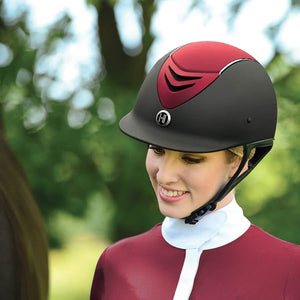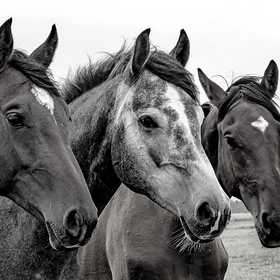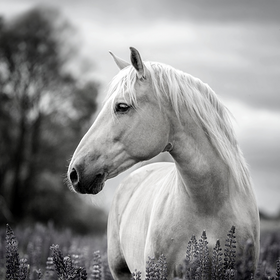
All About Gaited Horses
Whether you’re an avid equestrian or new to the horse world, chances are you’ve probably heard of gaited horses. Maybe you’re familiar with the term, but do you know what a gaited horse is?
What does “gaited horse” mean?
A gaited horse is a horse that moves each leg independently. This means that one hoof is on the ground at all times. With this method of travel, the horse can conserve more energy than they would while trotting. Gaited horses are ideal for traveling long distances as they have greater stamina and endurance.
Recognizing a Gaited Horse
Gaited horses move noticeably different than non-gaited horses. Still, it can be hard to differentiate between a truly gaited horse and one that just moves oddly. You simply have to observe their movements to determine if a horse is gaited.
A gaited horse should have a four-beat gait. When walking, each foot will fall individually, following a precise pattern. Most gaited horses travel in this pattern: right hind, right front, left hind, left front or right front, left hind, left front, right hind. You’ll also notice that both legs on one side will move forward simultaneously. The rear foot will always fall before the front foot.
Common Gaited Horse Breeds
There are so many different gaited breeds in the world. The following are some of the most common gaited horse breeds in America:
- American Saddlebred
- Icelandic Horse
- Morgan Horse
- Paso Fino
- Rocky Mountain Horse
- Tennessee Walking Horse
Why Choose a Gaited Horse?
Now that you know a bit more about gaited horses, you may ask yourself: why would I want a gaited horse? Well, if you’re looking for comfort, that’s your answer! The way that gaited horses travel naturally carries riders comfortably over long distances. Trail riders, beginner riders, and those with back or joint pain choose these horses for their comfort.
Additionally, because their gaits are naturally energy-conserving, these horses can travel all day without growing tired! So not only are they beautiful and unique, gaited horses are famous for having great stamina and easy-going temperament.
The Special Gaits
Pace
This is a lateral two-beat gait. In the pace, the two legs on the same side of the horse move forward together. This is different from the trot, where the two legs diagonally opposite each other move forward together. Two feet are always off the ground in both the pace and the trot. Gaited horses naturally prefer to pace rather than trot. Pacers are also faster than trotters on average, even though horses are raced at both gaits.
Ambling Gaits
An ambling gait is any of several four-beat horse gaits. All ambling gaits are faster than a walk but usually slower than a canter. Ambling gaits are smoother for a rider than both the trot and pace. Here are the most common lateral ambling gates:
- Running walk: Most often performed by Tennessee Walking Horses. It is a four-beat gait with the same footfall as a regular walk, but it’s significantly faster.
- “Slow Gaits”: This is a general term for several slower forms of the classic amble. They all follow the same general footfall pattern as the walk, so the lateral pairs of legs move forward in the sequence, but the rhythm and collection of the movements are different.
- Rack: Also known as the single-foot. The rack is an even, lateral four-beat gait. Many breeds can produce this gait, but it’s most commonly seen in the five-gaited American Saddlebred.
- Tölt: A four-beat lateral ambling gait mainly found in Icelandic horses. It’s characterized by explosive acceleration and speed while also being comfortable and ground-covering.





